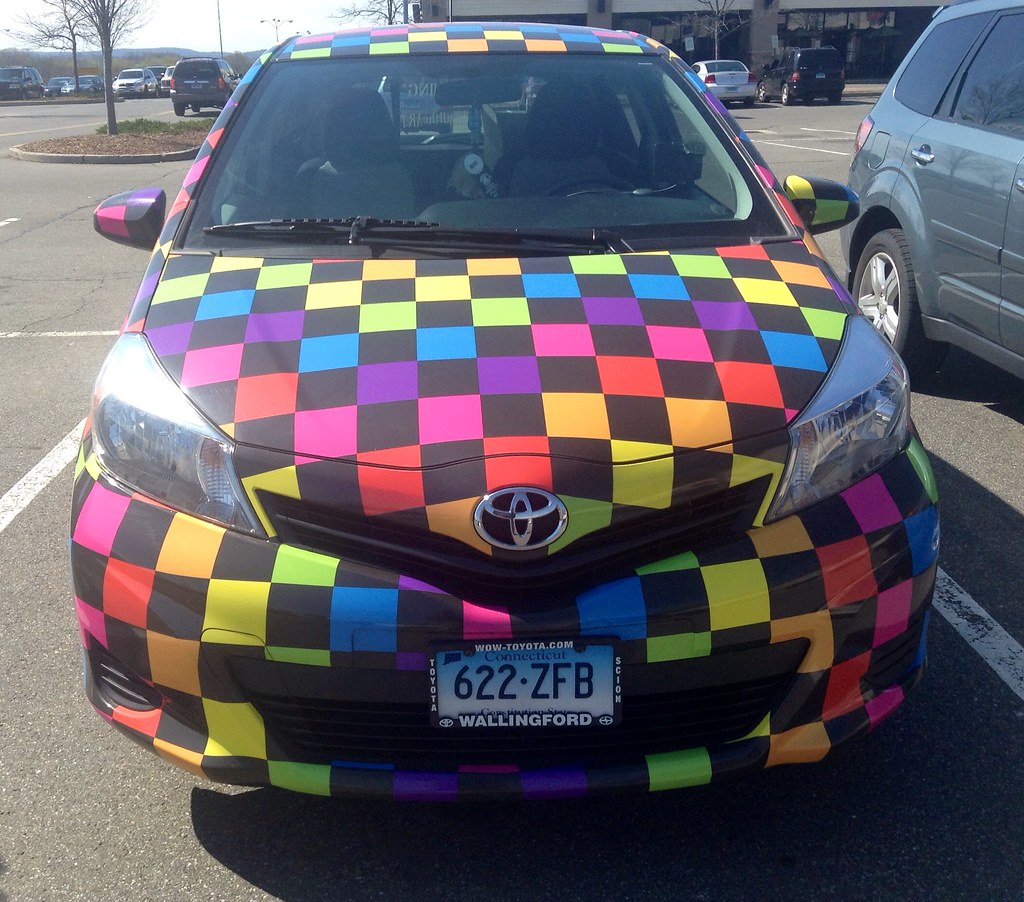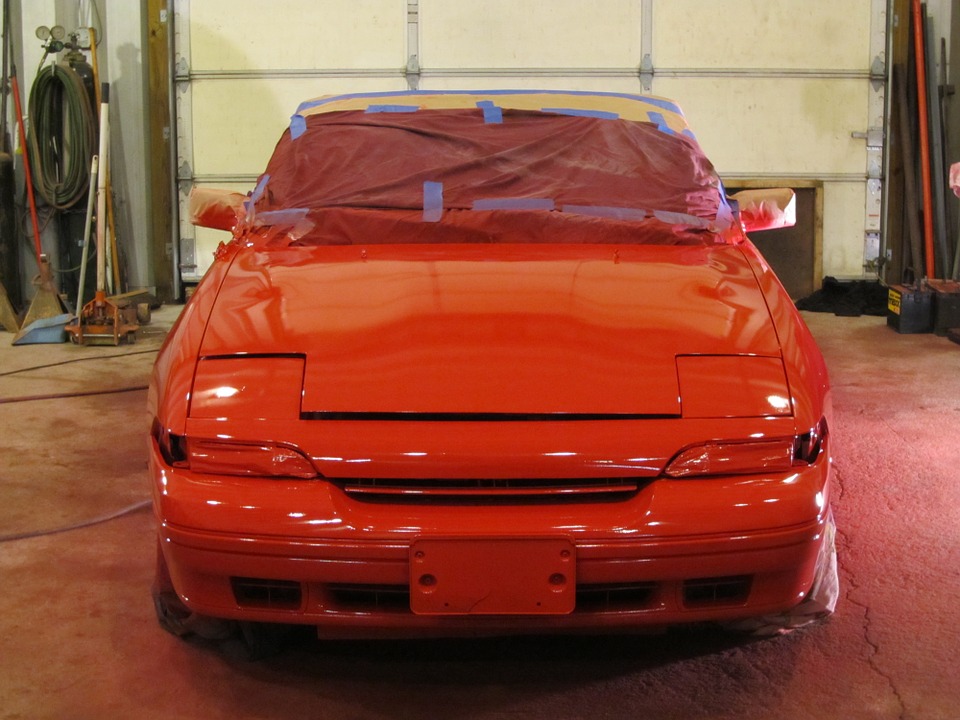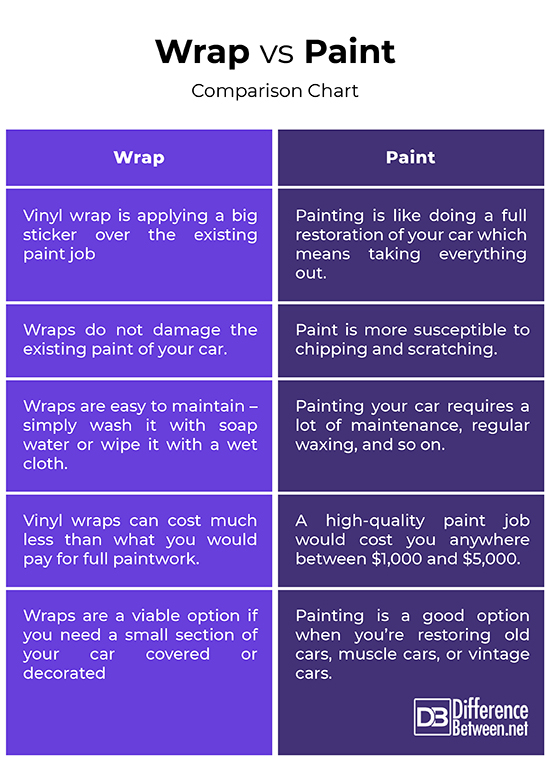Difference Between Wrap and Paint
Just like everything else, your ride needs a makeover too now and then. Plus you can find a dozen reasons to modify the looks of your car. After all, it does not hurt to keep up a shiny, flawless exterior. A good foundation and proper paint will go a long way. However, a paint job is much more than just walking up to your car with an airbrush in hand and starting to spray. Each paint job requires proper planning and research. And there’s more to it than meets the eye. Considering the harsh conditions you ride have endured over the years, painting can be a daunting task. However, there’s one fine alternative to it – you can choose to vinyl wrap your car which is putting a big sticker over the existing paint job, as opposed to repainting the whole thing. But, which one’s the better option or would you choose a wrap over the more reliable paint job?

What is Vinyl Wrap?
Vinyl wrap is applying a big sticker over the existing paint job, as opposed to repainting your whole car. Wraps are not exactly a substitute for your paint but are a less expensive alternative to painting which requires applying a thin film of vinyl over the paint of your vehicle and securing it with adhesive. With modern vinyl wraps, you can take an ordinary vehicle and make it visually appealing with some fine detailing system. It provides an extra layer of protection to your vehicle, plus you can choose from hundreds and hundreds of different color options to choose from – whether you choose to do full wrapping or however you want to do it. Wrapping is not the same thing as a paint job; it’s laminated so not as susceptible to UV rays as paints and they are quite thick which minimizes the daily wear and tear like scratching or chipping, which are some of the most common problems with a standard paint.

What is Paint?
Painting your car is like doing a full restoration. It is like taking the engine out, taking out all the seats, basically you take out everything, strip the entire car down until it’s a shell and paint the whole shell. Paint is probably the most effective way to restore old cars, muscle cars, vintage cars, and anything along those lines with no lingering imperfections. Painting has a lot of weight to it because the results are permanent and your car after the paint job looks new again. But there’s a lot that goes into painting a car. First, you need to understand the chemistry behind the process which helps to inform your spraying technique. It is also important to know what kind of paint you have on your car which will determine the extent to which you strip your car.
Difference between Wrap and Paint
Durability
– Vinyl wrapping your car is putting a big sticker over the existing paint job, as opposed to repainting the whole thing. Painting is like doing a full restoration of your car which means taking everything out, the engine, seats, everything, strip the entire car down until it’s just a shell. Vinyl wraps are extremely durable because they are laminated, providing an extra layer of protection to your car including the paint under it. Besides, vinyl wraps are not as susceptible to UV rays as paints.
Ease of Use
– Wraps do not damage the existing paint of your car. In fact, with high-quality wraps like the 3M vinyl wrap (a removable, cast film for car detailing), it acts as a protective layer over the underlying paint job. You can even remove the vinyl wrap with ease. Vinyl is easy to maintain; simply wash it with soap water or just wipe it with a wet cloth. It also protects your paint from the sun and other harsh elements that affect your car. Painting is a much more hectic process that requires a lot of planning, research and time.
Cost
– Cost of painting your car depends on whether you want full paintwork or some selected portion of your car. A standard paint job would cost you about $500 but if you want top results, a high-quality paint job would cost you anywhere between $1,000 and $5,000. Of course, painting is a viable option when you are restoring old cars, muscle cars, vintage cars, and anything along those lines. However, in some instances, vinyl wrapping your car can cost much less than what you would pay for full paintwork. If you need a small section of your car covered or decorated, then vinyl wrap may be the viable option.
Flexibility
– Vinyl wrap films come in a wide range of options if you’re looking to improve the appearance of your car, providing a plethora of customization options so that you can choose from what best suits you. The design options include a standard glossy color, metallic matte finish, satin vinyl wraps, metallic chrome, and graphics treatment. When it comes to a multitude of vinyl wrap options, the sky is the limit. However, the same images or colors can also be attained with a paint job, but it would require a great deal of customization, skill, and money for the same.
Wrap vs. Paint: Comparison Chart

Summary of Wrap vs. Paint
With vinyl wraps, you’ll spend less time on maintenance and the cost can be reduced significantly, if you just need a small section of your car covered, as opposed to a paint job. But, if your car is in pretty bad condition with lots of scratches or dents around, vinyl wrapping is not at all a good idea. Any imperfections on the existing paintwork will be clearly visible, even with the vinyl wraps on. In that case, repainting is the best option. Painting is a viable option when you’re restoring old cars, muscle cars, or vintage cars. So, the bottom line is you need to understand when to repaint and when to wrap your car.
Doyle, Renny. How to Start a Home-based Car Detailing Business. Maryland, United States: Rowman & Littlefield, 2012. Print
- Difference Between Caucus and Primary - June 18, 2024
- Difference Between PPO and POS - May 30, 2024
- Difference Between RFID and NFC - May 28, 2024
Search DifferenceBetween.net :
Leave a Response
References :
[0]Richardson, Jim. Classic Car Restorer's Handbook: Restoration Tips and Techniques for Owners and Restorers of Classic and Collectible Automobiles. New York, United States: Penguin Putnam, 1994. Print
[1]Richardson, Jim. Classic Car Restorer's Handbook: Restoration Tips and Techniques for Owners and Restorers of Classic and Collectible Automobiles. New York, United States: Penguin Putnam, 1994. Print
[2]Jones, Matthew and Ian Taylor. Car Painting. Marlborough, United Kingdom: Crowood Press, 2015. Print
[3]Doyle, Renny. How to Start a Home-based Car Detailing Business. Maryland, United States: Rowman & Littlefield, 2012. Print
[4]Image credit: https://live.staticflickr.com/7366/13914293078_a23c9cd809_b.jpg
[5]Image credit: https://cdn.pixabay.com/photo/2015/04/23/22/50/car-736954_960_720.jpg
